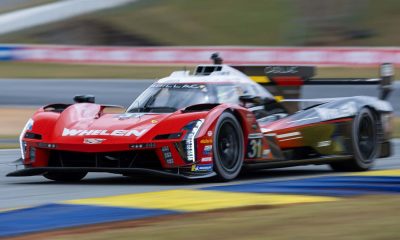Lifestyle
During her performance of ‘So High School’, Taylor Swift pays tribute to Travis Kelce

Taylor Swift recently gave a shoutout to her boyfriend Travis Kelce during her Eras Tour show in Paris, where she performed her song “So High School” for the first time. The song, rumored to be about her relationship with Kelce, featured a special nod to the NFL star in the choreography. Swift and her dancers performed a “swag surf,” a move associated with Kansas City Chiefs fans, during the performance, with dancer Kameron Saunders mimicking Kelce’s touchdown celebration.
Swift’s Eras Tour setlist also included songs from her new album, The Tortured Poets Department, such as “But Daddy I Love Him,” “Who’s Afraid of Little Old Me,” and “I Can Do It With a Broken Heart.” The addition of songs from TTPD meant changing the rest of the concert, with cuts made to songs like “The Archer” from her previous album Lover. Swift also made changes to her wardrobe, introducing new outfits for each section of the show, including new Lover and Midnights bodysuits and an updated Fearless dress.
This show marked Swift’s return to the tour stage after a two-month hiatus and kicked off the international leg of her tour. Although Kelce was not in attendance, he showed his support for Swift and her band on social media before the concert. Fans were thrilled to see Swift’s performance of “So High School” with its special nod to Kelce, adding an extra layer of excitement to the show.
Fans of Taylor Swift were delighted to see her pay homage to her relationship with Travis Kelce during her Eras Tour show in Paris. The performance of “So High School” included a special choreography that referenced Kelce’s signature moves, adding a personal touch to the song. Swift’s dedication to her relationship was well received by fans, who appreciated the subtle nod to her boyfriend during the show.
The inclusion of songs from Swift’s new album, The Tortured Poets Department, added a fresh dynamic to the Eras Tour setlist. Changes were made to accommodate the new songs, with cuts to some older tracks like “The Archer” from her previous album Lover. Swift also updated her wardrobe for the show, showcasing new outfits for each section of the concert, including updated versions of her iconic costumes from past eras.
The energy and excitement of Swift’s return to the tour stage after a brief hiatus were palpable during the Paris show. Fans were thrilled to see her perform “So High School” for the first time, especially with its special reference to her relationship with Kelce. Swift’s attention to detail and commitment to her craft were evident in every aspect of the show, from the choreography to the wardrobe changes, creating a memorable experience for all in attendance.
Overall, Taylor Swift’s performance in Paris during her Eras Tour was a testament to her artistry and dedication to her fans. The inclusion of personal references to her relationship with Travis Kelce added an extra layer of depth to the show, showcasing Swift’s ability to connect with her audience on a personal level. As the tour continues, fans can look forward to more special moments and surprises from one of the biggest stars in the music industry.

-

 Politics3 days ago
Politics3 days agoLatest news on the 2024 election: Biden fundraising in San Francisco and Seattle regions
-

 Politics3 days ago
Politics3 days agoThe Biden Administration’s decision to publicly confront Israel over Rafah
-

 News3 days ago
News3 days ago£132,000 farmhouse on the brink of 150ft cliff starts demolition as owner evacuated – neighbor vows to stay until his death.
-

 Uncategorized3 days ago
Uncategorized3 days agoThe Washington Post – Breaking news and latest headlines, U.S. news, world news, and video
-

 News3 days ago
News3 days ago16-year-old accused of defacing World War I statue in New York City
-

 Lifestyle3 days ago
Lifestyle3 days agoSelena Gomez shares adorable photo with Benny Blanco amidst Justin Bieber baby news
-

 Tech3 days ago
Tech3 days agoHere's an In-Depth Look at How Cadillac Made it to Le Mans In 2023
-

 News3 days ago
News3 days agoBritish family left ‘terrified’ after being surrounded by a shark at a Spanish beach – as 27-year-old mother recounts how the predator ‘zig-zagged’ in the water and pursued her father
















